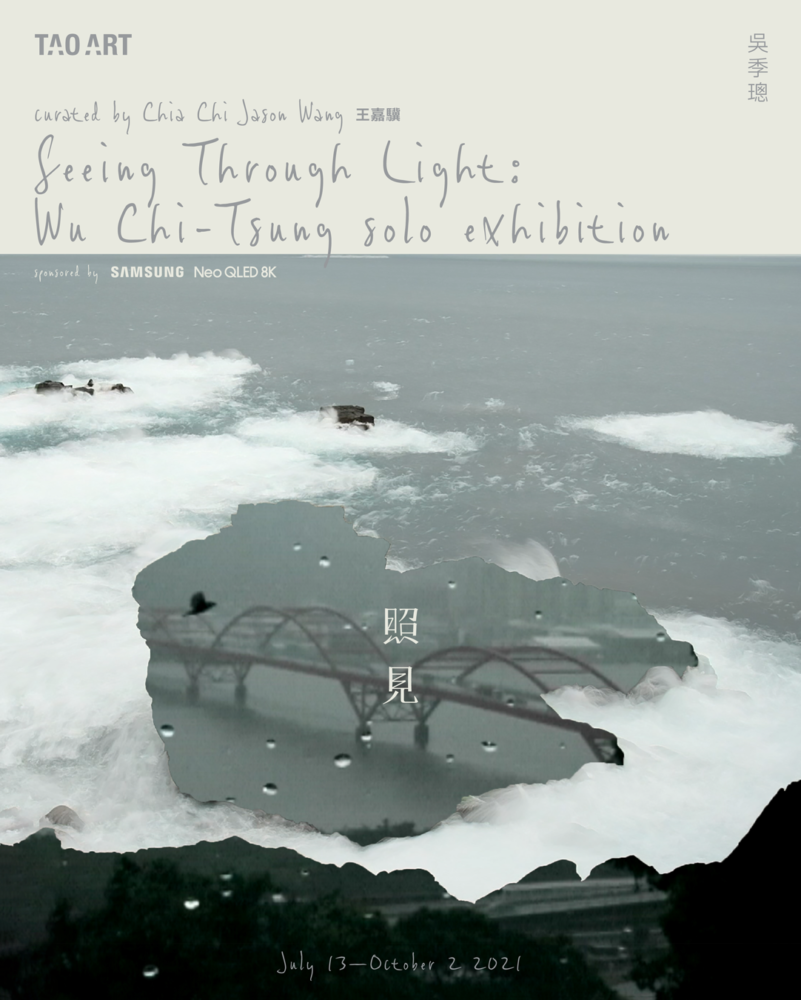
Public Dates Jul 13 – Oct 2, 2021, Tue – Sat, 11 am – 7 pm
Venue Tao Art Space, 8f, No.79-1, Zhouzi St., Neihu Dist., Taipei city
On Jul 13, “Seeing Through Light: Wu Chi-Tsung Solo Exhibition” opens at Tao Art Space in Taipei. Curated by renowned curator Chia Chi Jason Wang, the exhibition marks the premiere of a series of experimental video works, the Drawing Study Series. Applying a special video-filming technique, Wu Chi-Tsung offers an alternative way of looking at reality through the work.
Tao Art Space is jointly founded by art collector Vicky Chen and her father. Parallel to their collection and presentation of contemporary art, Tao Art Space has also established a remarkable collection of antiques under the name “Hu Bu Tang.” Both believing that Art could transcend time, Wu Chi-Tsung and Tao Art started this collaboration. The artist presents a special feature of ancient Buddhist sculptures from Tao Art’s Hu Bu Tang Collection as part of the Drawing Studies Series,bringinga modern “exposure” to the antiques. Alongside, early works such as Rain and Self-Portrait will be exhibited to ‘pan across’ Wu Chi-Tsung’s artistic journey with video and photography.
Due to the COVID-19 pandemic, Tao Art Space is limiting the number of people in the Gallery at any one time and is open by appointment only. Meanwhile, the Gallery has introduced a number of measures to keep the visitors and staff safe. Please click the button below to RSVP and enjoy your visit.
Seeing Through Light: Wu Chi-Tsung Solo Exhibition
Curated by Chia Chi Jason Wang
Once during nightfall, sculptor Auguste Rodin (1840-1917) held a lamp and led art critic Paul Gsell (1870-1947) to see an ancient Greek statue of Venus in the dark. With the dim lamplight, the sculptor turned the movable platform that held the statue, and made the critic look closely at the torso of Venus, illuminating the complex and intricate projections and depressions. This way, Rodin helped Gsell to discover the beauty of flesh represented by artists in the Classical period.[1]
During his youth, Wu Chi-Tsung was still exploring creative possibilities, and had also seen himself through light. In the dark, he replaced paintbrush with a flashlight, and pointed it at his face to capture his own portrait, while also setting the camera on long exposure (B mode) to allow the trail of light to simultaneously develop on the film. The printed and enlarged images became his earliest “Self-Portrait” series (2004). Based on this, “seeing through light” is not just a metaphor of Wu Chi-Tsung’s personal enlightenment and self-discovery, but also his unique creative means.
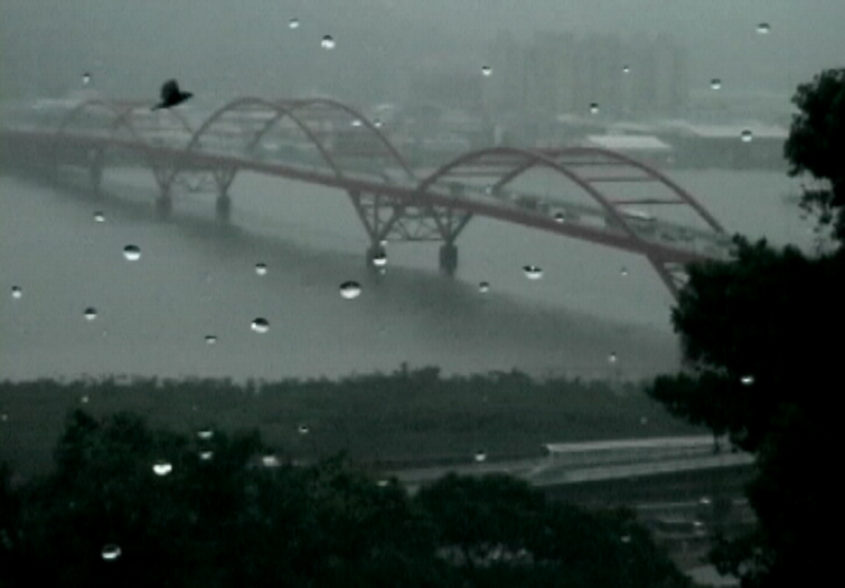
Before the “Self-Portrait” series, he tried to capture the scenery outside his home window using high shutter speed (1/8000 second) for “Rain” (2002). In the video, the constantly skipping raindrops are a sharp comparison to the seemingly stationary landscape of the Tamsui River far away, especially the Guandu Bridge that spans over the river, as well as the roads and surrounding woods. Between those things moving at a high speed and remaining stationary are the endless traffic on the bridge and the road. Through camera and video camera, Wu Chi-Tsung repeatedly reverses and topples human’s daily vision, as well as their perceptive experience of reality. Consciously, Wu Chi-Tsung manipulates the “moment” in time by stretching and slowing it down or rapidly accelerating and speeding it up, through which he offers an alternative way of looking at reality.
“Seeing through light” is a common term in Buddhist scriptures, referring to the thorough understanding and transcendence of enlightenment. In May 2021, Wu Chi-Tsung holds a solo exhibition at TAO ART Space. In response to the gallery’s collection of classical sculptures, Wu has specially selected five Buddhist statues from different dynasties that have unique aesthetics and spiritual significances, including: “Gilded and Colored Limestone Head of Buddha” from Eastern Wei to Northern Qi (6th century), “Limestone Head of Buddha” and “Limestone Standing Bodhisattva” from Northern Qi (6th century), “Limestone Head of Bodhisattva” from Sui (6th-7th century), and “Wooden Standing Venerable Ānanda” from Song (10th-13th century), as the source images to develop a series of videos. The title, “Seeing Through Light,” not only reflects the curator‘s observation on Wu Chi-Tsung’s art from the past to present, but also echoes these Buddhist statue-themed new works featured in this exhibition.
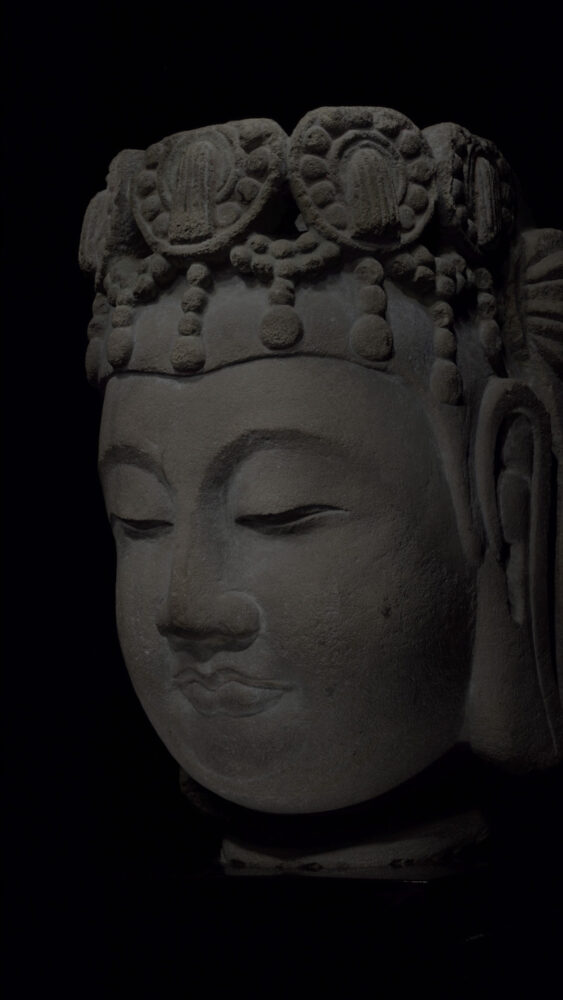
Like a brush made of light, the artist points a flashlight at the Buddhist statues and sketches; a video camera is fixed on the side to record the movements of the light beam in the space, as well as the end results of the manifestation of the Buddhist statues through the trail of light. The recorded videos, in the post-production process, are retouched using a digital program developed by the artist. Targeting each frame (30 frames/1 second), Wu Chi-Tsung sets for each layer a brightness parameter, so that it increases as the layers pile up. This way, the videos processed through the computer algorithm not only preserve the original temporal linearity, but also intensify with the piling up of layers to create a stunning visual effect, as if physical thickness were added to time.
Back in 2003, Wu Chi-Tsung was already experimenting with video creations of the same principle. The difference is that, back then, digital computing was still in the cradle, and he could only possess and access limited post-production tools, and make use of inexpensive equipment he had around to layer the pictures a frame at a time, completing “The Self-Portrait of 71 Frames.” Today, nearly 20 years later, with more advanced digital equipment and programs to assist his shooting and computing, the artist carries on and expands this concept that he was unable to thoroughly realize early on, achieving further development.
Early on, Wu Chi-Tsung completed many works simply titled “Self-Portrait” through exploring and experimenting on his own. From knowing self to observing reality, image tools were the core media he used to probe into the authenticity of phenomena. Contemplating on the nature of video and viewing, he often started from the rhetoric of suspicion and rhetorical question to establish the problematic. Paradox within suspense was almost an indispensable aesthetic quality of his video works.
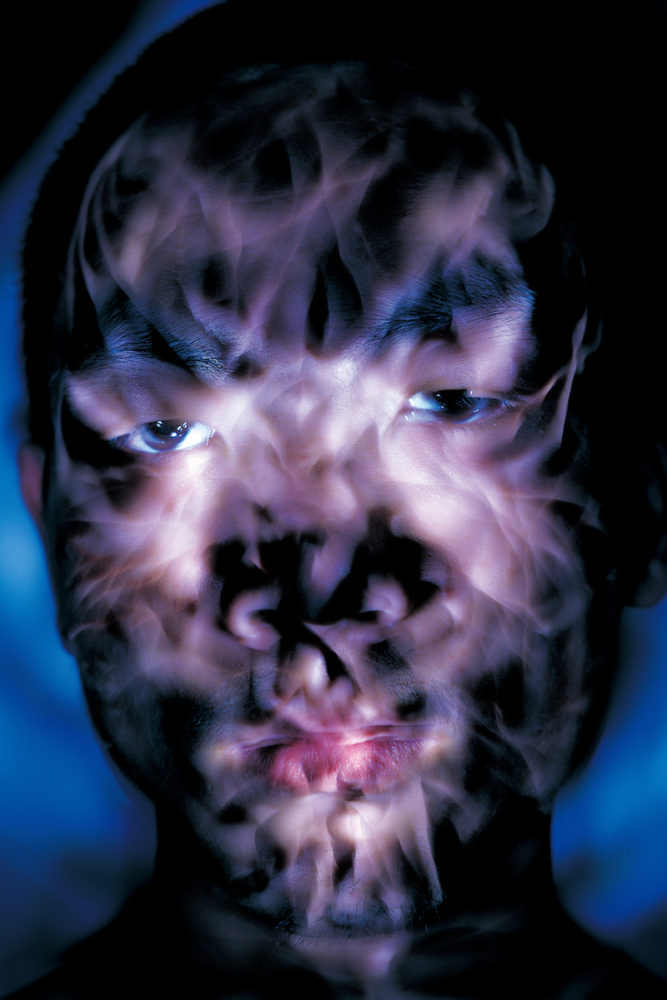
Continuing the existing style and video thinking, Wu Chi-Tsung’s seeing the Buddhist statues through light is obviously an exploration of artistic creation, which is concretely different than the Buddhist notion of enlightenment and seeing through reality and illusion. Despite this, the images of the Buddhist statues have been converted by him to gradually become illuminated in the dark, from partially to entirely, allowing audience to really witness the beauty of “seeing through light.” Wu Chi-Tsung conjures the embodied spiritual power of the statues to manifest its mysterious nature, while also turning the viewing experience into an enriched journey of discovery.
Wu Chi-Tsung continued to apply the same video post-production technique to the selected coasts and cities he shot, creating the “Drawing Study” series (2021). Regardless of the oceanic scenery at Longdong in northern Taiwan, or the urban landscapes of Taipei City, which are all actual real-time sceneries, the reprocessed videos show visual variations to create a perceptive confusion suspended between to be or not to be. Whether it is natural landscapes or urban crowds, they are all consistently changing to begin with; however, through the artist’s unique digital manipulation, they instantly consolidate into solid scenic spectacles, leaving everyone in awe. Although they originate from reality, what the artist offers are sceneries that can never happen in the phenomenal world. The artificial fabulation of Wu Chi-Tsung exists in-between reality and fiction, expanding for the works room of philosophical and aesthetic dialectics, and allowing viewers to ruminate on the notion of noumenon ( or thing-in-itself) and truth.
Matching the new videos created by Wu Chi-Tsung using the archived Buddhist statues of TAO ART Space as the source images with the spatial utilization, “Seeing Through Light: Wu Chi-Tsung Solo Exhibition” arranges for the original Buddhist statues seen in the videos to also be exhibited, hoping to trigger intriguing dialogues for the unexpected encounter of ancient and contemporary arts. Also, at the entrance of the first gallery, a special display of hand-puppet and hand-puppetry stage is specially organized—these are also unique items in the collection of TAO ART Space. The stages and puppets exude distinctive qualities of human drama, and the special display aims to welcome the guests of the exhibition, and usher them into the exhibition space.
As mentioned above, “Seeing Through Light: Wu Chi-Tsung Solo Exhibition” gathers works of the artist starting from his younger days of self-exploration, including “Self-Portrait,” “The Self-Portrait of 71 Frames,” and “Rain,” which are highly experimental, to all new works created in 2021, which include serval videos and photographic outputs using Buddhist statues as the theme, as well as two videos entitled the “Drawing Study” series that depict the oceanic scenery of Longdong and urban sceneries of Taipei. Comparing his earlier and new works not only helps audience to understand his latest works through learning about his past, but also allows audience to see Wu Chi-Tsung’s creative path and aesthetic preferences over the past 20 years.
[1] Auguste Rodin, Art: Conversations with Paul Gsell, trans. Jacques de Caso & Patricia B. Sanders (Berkeley and Los Angles: University of California Press, 1984), pp. 22-26.
日期 2021年7月13日 – 10月2日, 週二至週六11am – 7 pm
地址 Tao Art Space,台北市內湖區洲子街79-1號8樓
由策展人王嘉驥策劃的吳季璁個展《照見》,今日起於台北Tao Art Space開展。展覽將首次呈現藝術家使用新的拍攝技術完成的實驗影像《寫生習作》,展現其另類觀照現實之道。
TAO ART 由 Vicky Chen(陳薇捷)和父親共同創立,除了致力於當代藝術的收藏與展覽外,亦還建立了名為「胡不堂」的古物收藏,因其收藏路徑與吳季璁的創作方向不謀而合,本次,吳季璁特別與胡步堂合作,在《寫生習作》系列中,呈現了胡不堂收藏的佛像藏品,以現代之眼為古物賦予了全新的詮釋空間與觀看可能。此外,《雨景》、《自畫像》等早期影像作品也將展出,從而「全景」呈現出藝術家十餘年來對於實驗影像的思考與探索歷程。
受疫情影響,展覽將採取時段預約制,並嚴格遵守相關防疫規範,請通過下方鏈接進行預約後安心來館。
以下為策展人王嘉驥為本次展覽撰寫的介紹文章,文中將回顧吳季璁的影像創作生涯,並細緻介紹了本次《寫生系列》中所探索的數位影像技法。
照見:吳季璁個展
Seeing Through Light: Wu Chi-Tsung Solo Exhibition
策展人/王嘉驥
雕塑家羅丹(Auguste Rodin, 1840-1917)曾經趁著黃昏入夜的時間,持燈引導藝評家葛賽爾(Paul Gsell, 1870-1947),在黑暗之中欣賞古希臘的維納斯雕像。透過幽微燈光的映照,雕塑家同步推移承載雕像的轉盤,讓藝評家的目光緊盯愛神像的軀體,照見細膩有致的凹凸變化。藉此,羅丹讓葛賽爾發現了古典時代藝術家再現的肉體之美。[1]
年少時期的吳季璁,仍在摸索創作的可能,亦曾借光自照。在黑暗中,他以手電筒替代畫筆,對著自己的臉部捕捉肖像,並將相機設定為長時間曝光(B快門),讓光跡同步顯影在底片上。沖印放大的影像,成為他最早期的《自畫像》(2004)系列。就此而論,「照見」不僅是吳季璁個人啟蒙與自我發現的隱喻,也是他用於創作的獨特手段。
在《自畫像》系列之前,他嘗試過以高速快門(1/8000秒)攝錄自家窗外所見的《雨景》(2002)。動態影像裡,跳動無歇的雨滴對照遠處看似凝止不動的淡水河地景,尤其是橫跨河面的關渡大橋,以及路面和週遭的樹林。介於高速運動和凝結靜止之間,則是橋上和路上川流不息的車潮。透過相機和攝影機,吳季璁一再地反轉並顛覆人類日常的視覺,以及對於現實的感知經驗。有意識地操作時間中的「剎那」,予以延遲放慢或激烈加速,吳季璁提供了另類的觀照現實之道。
「照見」也是佛典常見常用的語彙,指向開悟成佛的透徹與超脫。2021年5月,吳季璁在Tao Art Space發表個展,特別因應此一機構的經典雕刻收藏,選擇了五件別具美感與精神意涵的歷代佛像,包括:東魏至北齊(6世紀)的灰石貼金帶彩佛首像、北齊(6世紀)的灰石佛首像和菩薩立像、隋代(6-7世紀)灰石菩薩首像,以及宋代(10-13世紀)木雕阿難尊者立像等,作為文本,發展出一系列的錄像作品。借「照見」之名,除了反映策展人對於吳季璁過往以來的藝術觀察,也對應他此次以佛像為題的這些新作。
手電筒猶如光筆,藝術家對著佛像寫生;攝影機固定在旁,紀錄光束在空間中的移動,以及佛像在光跡下顯影的結果。錄製完成的動態影像,在後製的過程中,經由藝術家研發的數位程式,重新加以處理。針對每個影格(1秒30格),吳季璁為畫面的圖層設定明暗度的參數,令其逐層疊加。如此,電腦運算過後的錄像畫面,除了維持原來的時間線性,卻因為影格圖層的累加而強化,塑造出一種令人驚異的視覺效果,彷彿時間增加了物理性的厚度。
相同原理的錄像創作,吳季璁早在2003年已有嘗試。差異在於,那時還是數位運算方興未艾之時,他能擁有和取得的後製工具極為有限,只能運用手邊拮据的設備,逐格疊加圖層,完成了初階的《71格的自畫像》。將近20年後的今天,有了更先進的數位設備和程式協助拍攝與運算,藝術家延續並擴充早期還無法徹底實踐的觀念,如今有了進一步的發展。
早期的吳季璁多半憑藉自我摸索與實驗,完成不少直接以「自畫像」命名的作品。從認識自我到觀察現實,影像工具是他觸探現象真實性的核心媒介。思考影像及觀看的本質,他經常從懷疑和反詰的修辭開始,建立問題意識。懸疑中的弔詭幾乎是他影像作品不可或缺的美學特質。
延續先前已有的風格與影像思考,吳季璁借光照見佛像,明顯是出於藝術創作的探索,與佛家參悟虛幻現實的依歸具體有別。雖然如此,經他轉化的佛像形影,在幽暗中逐漸轉明,從局部到全部,倒是讓觀眾如實目睹了「照見」之美。吳季璁召喚佛像內蘊的精神力,顯現其神祕性,也使觀賞變成一趟豐富的發現過程。
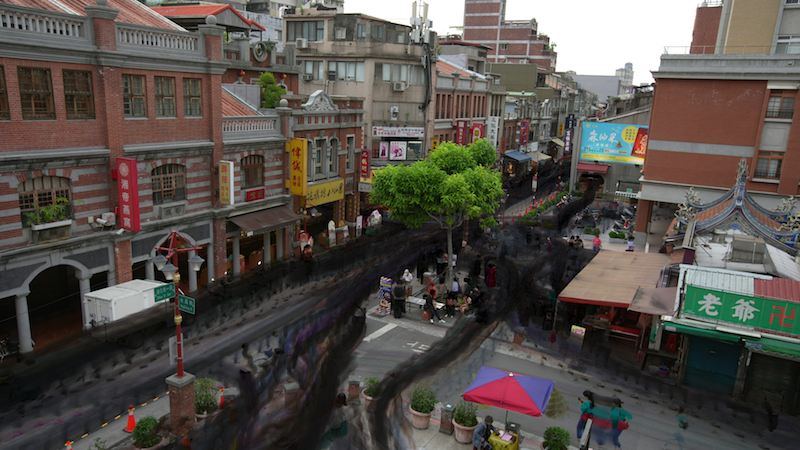
吳季璁繼續將相同的影像後製技術,運用於他選景拍攝的海岸和城市,成為《寫生習作》(2021)系列。不管是北臺灣的龍洞海景,或是都會區的臺北市景,雖然都是再真實不過的現實即景,重新處理過後的動態影像,出現了視覺上的變異,製造了懸宕在是與不是之間的感知迷惑。自然景觀也罷,城市人潮也罷,本來都是變動不居;然而,經過藝術家特殊的數位操控以後,卻在轉瞬間凝結為固態的風景奇觀,著實讓人嘖嘖稱奇。儘管本於現實,創作者提供的卻是現象界不可能真實發生的圖景。吳季璁的人為擬造,存乎現實與虛構之間,擴延了作品的哲學暨美學思辨空間,觀者得以反芻本體與真實。
搭配吳季璁以Tao Art Space所藏佛像為文本的影像新作,「照見:吳季璁個展」在空間的運用上,也安排影像中所見的各尊佛像原作一同展出,期盼增添古代與當代藝術不期而遇的對話趣味。同時,第一展廳的入口處,特別安排了掌中劇的舞臺及戲偶展出──也是Tao Art Space的特別收藏。戲臺與人偶帶著鮮明的人間戲劇特質,也藉此迎賓,引領觀眾進入展場空間。
如前所述,「照見:吳季璁個展」集結藝術家年少時期以自我探索為起點的作品,包含《自畫像》、《71格的自畫像》、《雨景》等,具有濃厚的實驗氣息。2021年的全新之作,包含多件以佛像為題的錄像和攝影輸出作品,以及兩件分別以龍洞海景和臺北市景為題的《寫生習作》錄像作品。藉由早期作品與新作的對照,除了提供溫故知新之感,也讓觀眾得以觀照吳季璁20年來的創作路徑與審美偏好。
[1] Auguste Rodin, Art: Conversations with Paul Gsell, trans. Jacques de Caso & Patricia B. Sanders (Berkeley and Los Angles: University of California Press, 1984), pp. 22-26. 亦參閱《羅丹藝術論》,羅丹口述,葛賽爾筆記(臺北:雄獅圖書股份有限公司,1992),頁45-51。